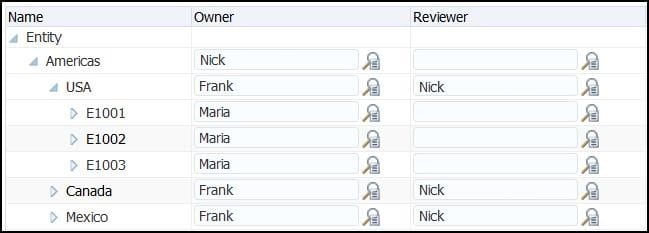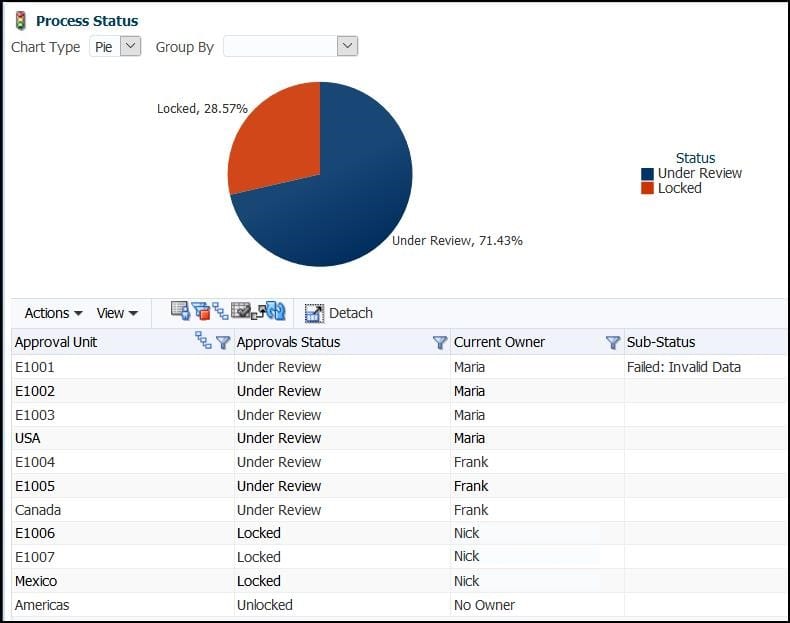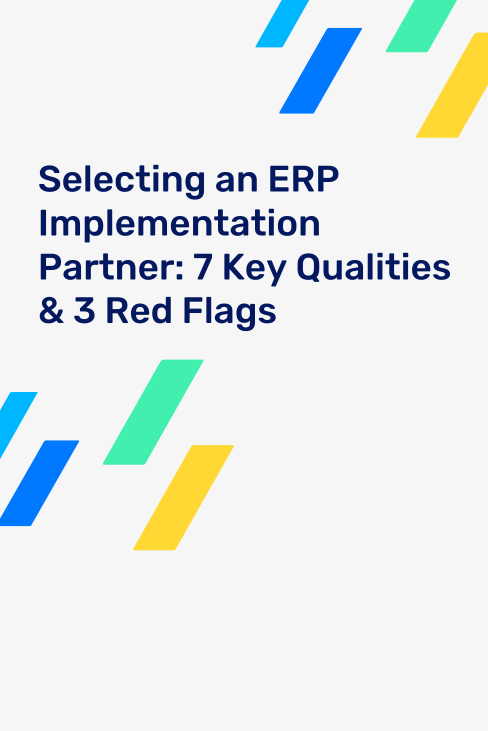What is Process Management?
Process Management is a tool within FCCS that allows a company to put controls into the application that align with auditor and internal process requirements. With the help of approval units and workflow capabilities, companies can leverage Process Management to prevent the locking of entities if certain validation criteria have not been met. This blog will cover basic Process Management functionality, how the FCCS functionality stacks up against HFM, and examples of common validation rules.
Functionality Overview
There are two main benefits of enabling process management in your FCCS application. The first is that there are built-in workflow capabilities through approval hierarchies. Approval hierarchies are built using the entity dimension and can include every member and level of the dimension, or only select portions. Once the approval hierarchy is built, owners, reviewers, and approvers are assigned to entities. This means that assigned users are able to complete checks on entities and promote them through the approval hierarchy as desired.

The other main draw of enabling process management is the use of data validation rules to create hard stops in the system if an entity fails any one of the defined validations. A common example of a validation may be to confirm that the balance sheet is in balance by entity. To fail this validation, an entity would need to have an unbalanced balance sheet. While this validation has a status of failed, the entity cannot be promoted through the approval hierarchy or be locked. To change the failed status, the out of balance must be corrected and the validation must be performed again. At that point, the entity can be promoted and eventually be locked if all other validations are passed.
Since Process Management uses the data validation functionality within data input forms, setting up a validation is straightforward. To set up the aforementioned balance sheet check, a basic data form that pulls Assets, Liabilities, and Equity can be used as a starting point. With the addition of a formula row or column to calculate the out of balance amount, a data validation rule can be added to the web form. If the application has process management enabled, there is a new “Do Not Promote” option available within the data validation rule setup. This means that if the balance sheet out of balance exceeds your defined threshold, the entity cannot be promoted through the approval hierarchy and therefore cannot be locked. In turn, this means that the entity’s data can still be affected by business rules, such as a consolidation.


Comparison to HFM
Process Management in FCCS is strikingly similar to Process Management within HFM with the largest difference being how the validations are set up. In HFM, validation rules are set up within the rules file; however, in FCCS, validation rules can only be set up through data input forms.
One important similarity is that in both HFM and FCCS, failing a validation prevents the entity from being locked. However, locking entities is slightly different in HFM and FCCS. In HFM, locking an entity through Process Management prevents that entity’s data from being changed via data form input or a consolidation. In FCCS, locking an entity through Process Management only prevents that entity’s data from being changed via a business rule, such as a consolidation. The key difference here is that FCCS has a separate entity lock for data input forms that is not included in the locking of an entity via process management.
One major improvement of Process Management in FCCS is the ability to use pre-built dashboards and reports. Similar to other out-of-the-box FCCS functionality, Process Management comes with reports and dashboards that are set up to begin using immediately and do not require tailoring. Without lifting a finger, administrators are able to monitor the process status of entities within the approval hierarchy.

Other Common Validation Rules
While ensuring the balance sheet is in balance may be a common and easy to understand validation, there are endless possibilities for validations. A short list of further examples includes:
- Roll forward validations to ensure the movements are not over- or under-compensating for activity
- Roll forward validations to ensure Depreciation Expense equal Accumulated Depreciation
- Validation to confirm the absence of data at a “No Product” or other “No” member of a custom dimension
- Reclass validation to ensure that data is not being moved in an unjustified manner
Conclusion
Process Management is a great tool to support controls put into an application using validation rules that can be defined to meet your organization’s needs. With process management in your corner, you are well on your way to a smooth and controlled close in FCCS! Keep an eye out for future blogs on exactly how to set up approval hierarchies as well as in depth walkthroughs of setting up common validations, such as the balance sheet balancing!






